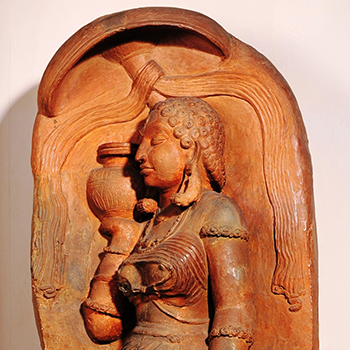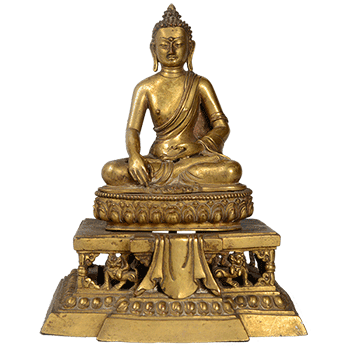One of the most fascinating figures from the Indus Valley Civilization is the sculpture titled ‘Mother Goddess’. This terracotta sculpture has been made by hand. It has its origin in Mohenjo-Daro, Pakistan and dates back to 2500 BCE. It is 22cm in height, 8.5cm in width and 3.4 cm in depth. Presently, it is on display in the Indus Valley Civilization gallery in the National Museum, Delhi.
































